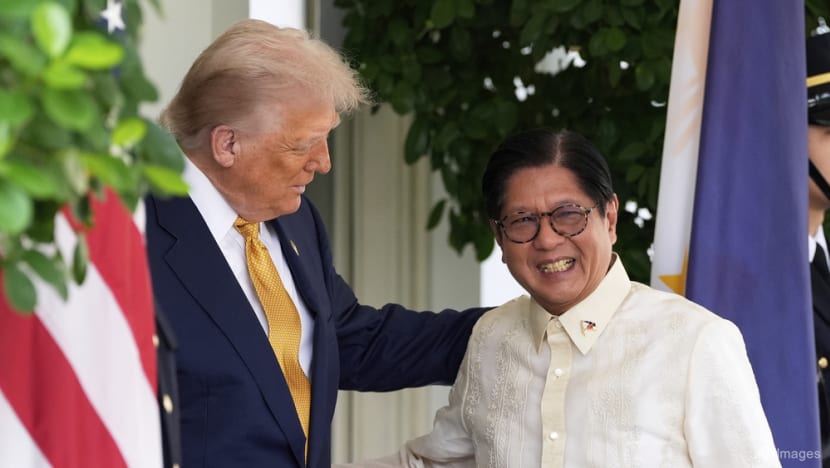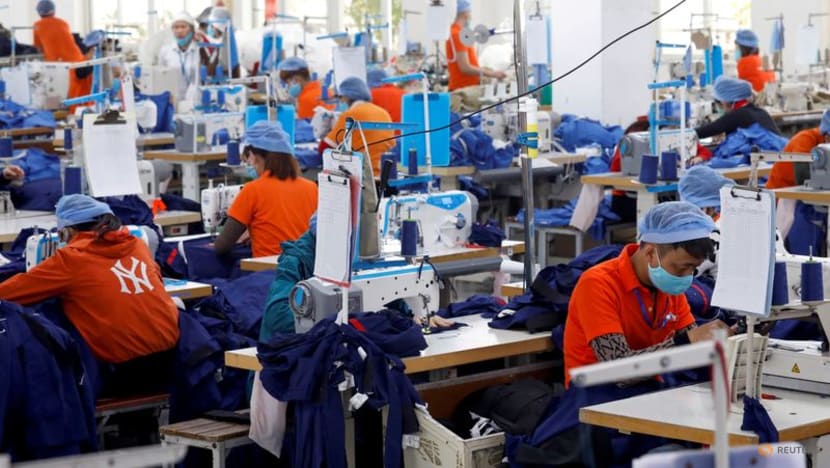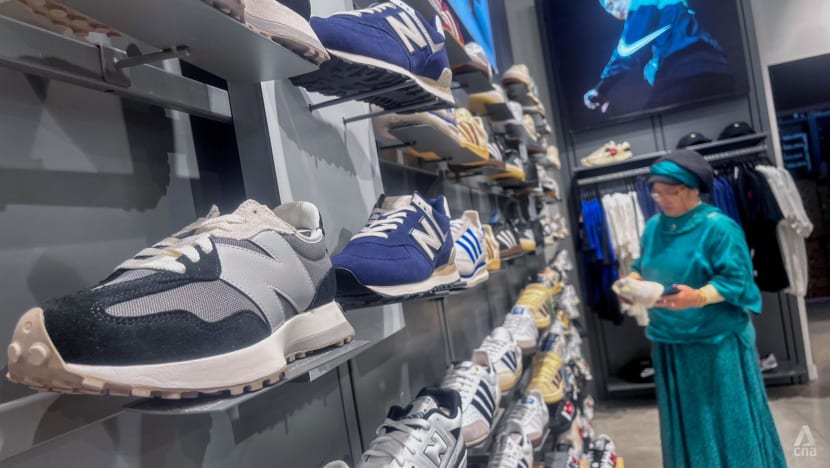JAKARTA: With three Southeast Asia countries having struck trade deals with the United States, their approach offers a possible template for other countries in the region still trying to negotiate a lower tariff rate with the superpower, say analysts.
They point to some similarities in what Indonesia, Vietnam and the Philippines have done as lessons their neighbours could potentially adopt: Offering zero tariffs on US goods, buying more US products and speaking directly to President Donald Trump.
However, observers added that these factors may not apply in the same way to all Southeast Asia countries.
Furthermore, Trade and investment expert Andry Satrio Nugroho from the Institute for Development of Economics and Finance (INDEF) said that it remains unclear whether the three deals announced so far would be the best, given that other Southeast Asian countries are still negotiating with Washington.
“We still don’t know whether Vietnam and Indonesia are countries whose tariffs can be classified as much lower than those of other countries, especially in ASEAN,” he said, referring to the 10 member states of the Association of Southeast Asian Nations.
“Because there could be (better) opportunities for Thailand or Malaysia or other Southeast Asian countries.”
Still, Andry and other experts CNA spoke to said Southeast Asian countries could look to the agreements that Vietnam, Indonesia and the Philippines each have with the US to negotiate their own favourable deals before Aug 1, the day Trump’s tariffs will take effect.
The Philippines is the latest Southeast Asian country to close a deal with the US.
Trump announced the agreement on Tue (Jul 22) and said that the US would impose a 19 per cent tariff on goods from the Philippines, just below the 20 per cent he had threatened earlier this month, but still above the 17 per cent rate set in April.
He had announced on Jul 15 that the US had struck an agreement with Southeast Asia’s biggest economy, Indonesia.
This deal placed a 19 per cent tariff on Indonesian goods entering the US, down from 32 per cent.
Two weeks previously, Trump had announced that his country and Vietnam reached an agreement under which goods from Vietnam entering the US would be subject to a 20 per cent tariff, a sharp drop from the 46 per cent announced in April.
He lauded Hanoi’s willingness to charge zero per cent tariffs on US products.
“Vietnam will do something that they have never done before, give the United States of America total access to their markets for trade,” said Trump on Jul 2 in a social media post.

CONCESSIONS AND AGREEMENTS FROM THE PHILIPPINES, INDONESIA AND VIETNAM
Besides levying zero tariffs on US goods, both the Vietnam and Indonesia agreements contained a clause on transshipment, a practice involving the exports of goods originally from another country.
In Vietnam’s case, transshipped goods face a 40 per cent tariff, double the 20 per cent baseline rate, signalling Washington’s intent to clamp down on workaround routes that have long benefitted Chinese exporters.
Trump has accused Vietnam of being used to ship Chinese products so that Beijing can avoid the high tariffs the US imposes on China, according to Andry from INDEF.
However, few details are known about the agreement between Hanoi and Washington, with some media outlets reporting that Vietnam is still attempting to negotiate a better deal.
Some media reports also said that Trump’s announcement caught Vietnam by surprise, as it had thought the tariffs agreed upon were 11 per cent.
Like Vietnam, Indonesia will open its entire market to the US without any restrictions.
Alongside the 19 per cent tariffs on Indonesian goods coming to his country, Trump announced that the archipelago will also purchase US$15 billion in US energy, US$4.5 billion in American agricultural products, and 50 Boeing jets, many of which are 777s.
If there is any transshipment from a higher tariff country exported from Indonesia, then that tariff will be added to Indonesia’s current baseline tariff.
On Tuesday, the White House issued a joint statement with Indonesia saying that Indonesia has agreed to eliminate tariffs on more than 99 per cent of US goods and scrap all non-tariff barriers facing American firms.
Among other things, Indonesia has agreed to remove export restrictions on industrial commodities, including critical minerals, according to the joint statement.
It would also remove local content requirements, which require companies to use components made in Indonesia in their manufacturing processes for products entering the archipelago.
Indonesia also will remove recently enacted pre-shipment inspections and verifications of US exports that have posed problems for US agricultural exports and contributed to a growing US farm trade deficit, the statement said.

Negotiators for both countries would finalise the actual agreement in coming weeks, said a fact sheet issued by the White House.
Speaking at a panel discussion on Trump’s tariffs in Jakarta on Wednesday, Fithra Hastiadi, a senior advisor of the Indonesian Presidential Communication Office, said the agreement is a win-win for both countries.
“We consider this a first win,” said Fithra.
“But we’re aiming to achieve - as the joint statement suggests - that some of our products that are not directly competing with the US, for example, nickel, coffee, cinnamon, spices, CPO (crude palm oil), other agricultural products, minerals, and also aircraft components, can be actually aimed to zero per cent.”
However, Andry from INDEF and economic researcher Dandy Rafitrandi from the think tank Center for Strategic and International Studies (CSIS) are both concerned about the lifting of restrictions on critical mineral exports to the US.
Andry said this may trigger other countries to want the same, a move which Indonesia is unlikely to give, given that it is focused on its downstream industry.
For the past decade, Indonesia has tried to process its raw minerals locally to create higher-value finished products as it aims to increase economic growth.
"They could ultimately protest why the US is given special privileges while other countries aren't. So, it's considered unfair in terms of trade treatment,” he said.
Meanwhile, the deal with the Philippines reportedly includes a zero tariff on goods such as imported US cars.
Additionally, Marcos said the Philippines would import more soy, wheat and pharmaceutical products from the US.
The Philippines president, whom Trump described as “a very tough negotiator”, said that there were still many details to be ironed out in terms of other products that could potentially be affected by the deal.
“One (percentage point) might seem like a very small concession. However, when you put it into real terms, it is a significant achievement,” he said.
However, some critics called the deal"unfair", and expressed concern over the potential concessions to the US.
“(The) 19 per cent against zero (per cent) tariffs is definitely not the most fair deal between decades-old friends or allies like the United States and the Philippines,” said Philippines Senator Panfilo Lacson in a statement on Wednesday.

ZERO PER CENT TARIFFS: KEY TO NEGOTIATIONS?
Economic researcher Dandy from CSIS said that Vietnam, Indonesia and the Philippines held several negotiation talks with the US before reaching an agreement.
He added that the zero per cent tariff on US goods could be an example for other ASEAN countries to follow if they are looking to secure their own deals quickly.
“The key to negotiations between Indonesia, Vietnam and the US is the zero per cent tariff,” he said.
He added that the exception so far is Japan, which also struck a deal with Washington on Tuesday, but managed to get a 15 per cent tariff - lower than the three Southeast Asian countries.
Trump said the deal would include improved market access into Japan for American goods including automobiles, rice and other agricultural products.
Japanese autos, which account for more than a quarter of the country’s exports to the US, will see existing tariffs cut to 15 per cent from levies totalling 27.5 per cent previously.
Japan will keep its existing tariffs on imports of US agricultural products. The country will import more rice from the US but within the existing tariff-free quota, Japanese Prime Minister Shigeru Ishiba said.
"Japan seems to be an exception, because they're clearly a source of investment for the United States," said Dandy.
He added that the zero-tariff tactic is applicable to most countries in Southeast Asia, apart from Singapore, where US goods are already duty-free.
Instead, Singapore may work on other deals, such as those involving weapon purchase, he said.
But not every country may want to impose a zero tariff for the US, experts noted.
Indonesia has reached a deal with the US because it is committed to buying US products, said Andry from INDEF, and it can do so because it is a large market.
Smaller Southeast Asian countries may not be able to do this as they don’t need large quantities of (imported) products, said Andry.
However, he and Made Supriatma, a political expert and visiting research fellow at Singapore’s ISEAS-Yusof Ishak Institute, said that Indonesia’s talks to purchase 50 Boeing aircraft were already in place during the previous Joe Biden administration, so it is not new.
“The same goes for the export of agricultural products - that was also part of Biden-era agreements. Now Trump is trying to claim them as his own,” said Made.
Manufacturing countries like Thailand may not be able to adopt the same approach of granting zero tariffs on US goods, said Andry.
He said Thailand, which faces 36 per cent of tariffs, usually imports spare parts. It does not typically import whole products, since it has a strong domestic manufacturing sector, he added.
In any case, Thai economist Somjai Phagaphasvivat said in an interview with the Bangkok Post that the Kingdom cannot offer the same kind of trade proposals to the US as Vietnam.
Thailand cannot remove tariffs on all US imports because it has free trade agreements with fewer than 20 countries, while Vietnam has more than 20, of which most set import tariffs to zero, Somjai said.
If it has to do so, the products for which import tariffs should be reduced to zero per cent should be those that Thailand does not produce domestically or can only produce in limited quantities, he said.
Malaysia, on the other hand, is a major player in the semiconductor industry, said Dandy from CSIS, so it could offer the US something in this sector.
This could be zero tariffs for US semiconductor goods imported into Malaysia or Malaysia purchasing large quantities of US products for its semiconductor industry.
Its tariff was increased from its original 24 per cent to 25 per cent.
While other Southeast Asian countries are still negotiating, and could ultimately even end up with a better agreement than Vietnam, Indonesia and the Philippines, Dandy said, ASEAN should be more united moving forward.
It should have negotiated with the US as a group, and not individually, because as a bloc, the countries are stronger and would have more bargaining power.
Made, the visiting fellow at ISEAS-Yusof Ishak Institute, said that reaching a deal as a regional bloc will become more difficult now because individual countries are competing against each other.
This will have consequences, he said.
“ASEAN countries are bound by the Regional Comprehensive Economic Partnership (RCEP), which aims to create a shared market,” said Made.
“If competition among member states increases, this cooperation could become even harder to realise.”

DIRECT NEGOTIATIONS WITH TRUMP
The leaders of the Philippines, Vietnam, and Indonesia all spoke directly with Trump before an agreement was reached.
Philippines President Ferdinand Marcos Jr is in the US this week, the first visit by an ASEAN head of state since Trump took office in January, while the leaders of Vietnam and Indonesia had phone calls with Trump.
This could be key to getting a negotiation, but Andry from INDEF said that many countries must have done the same, in particular, phone calls.
“I think there are a lot of phone calls. I mean, let's not even talk about ASEAN - 75 countries are already nervous about facing these Trump tariffs,” said Andry.
“What is important to note is … who gets Trump's attention, in my opinion.”
In early July, To Lam, Vietnam’s General Secretary of the Communist Party of Vietnam, had a phone call with Trump during which he reiterated an invitation for the American leader to visit Hanoi.
Meanwhile, Prabowo spoke with Trump on the phone during his foreign visits. Upon landing in Jakarta on Jul 16, Prabowo also said he will go to the US in September or October.
So, whether these phone calls matter or not - or an actual visit is even better - remains to be seen, said Dandy from CSIS.
“It's very unpredictable. We can't decode what formula Donald Trump has because, frankly, no one can predict it,” he said.
“But if you say the template already exists, I think it does. Indonesia has tried Vietnam's template, and it works. So, maybe other countries can use the same template.”

